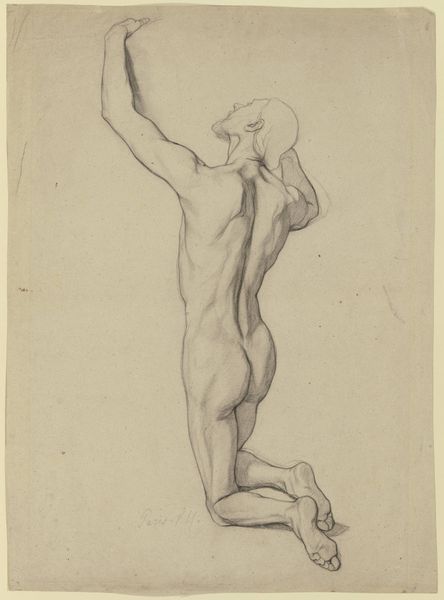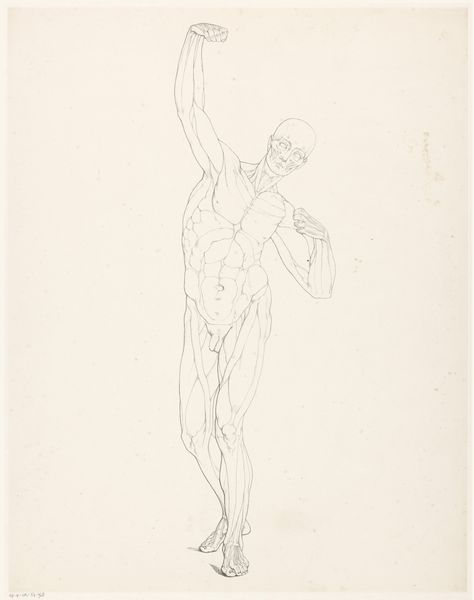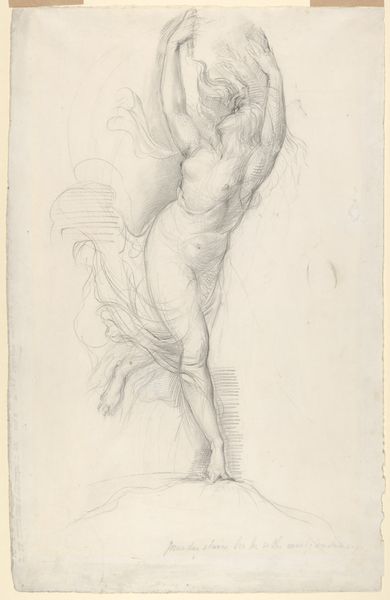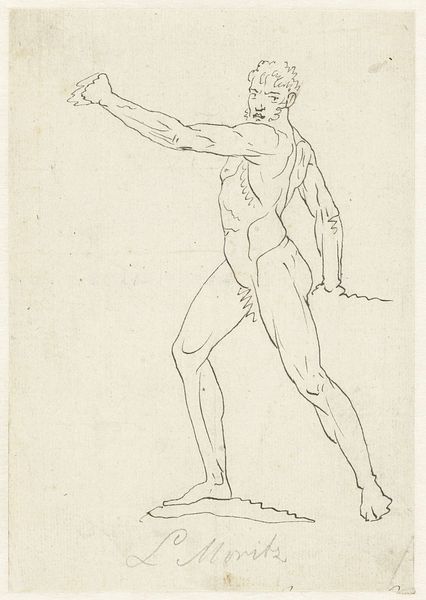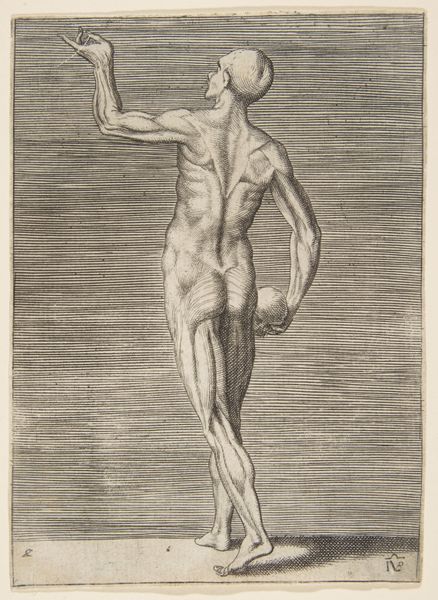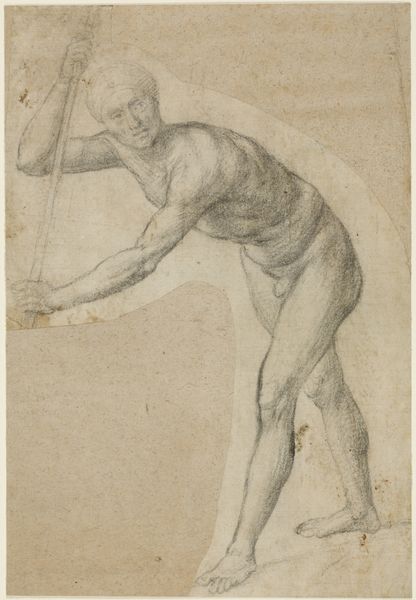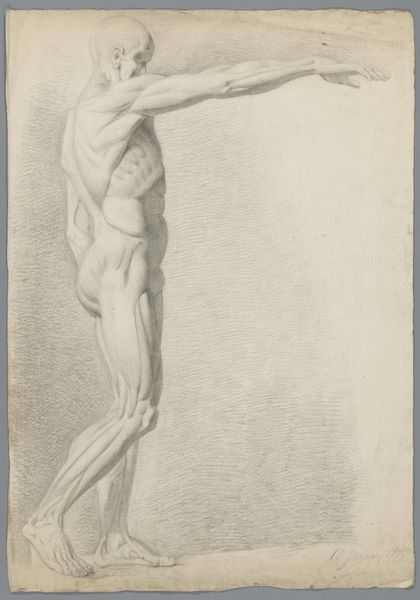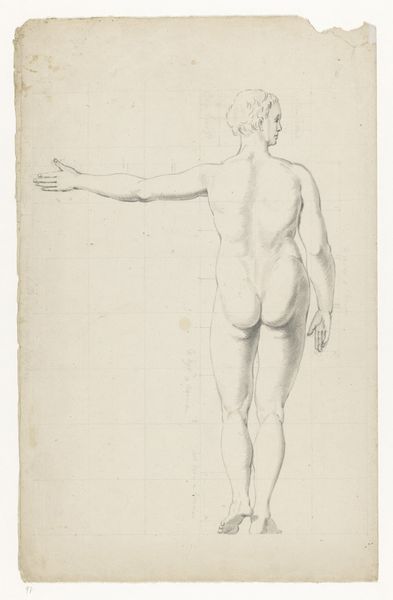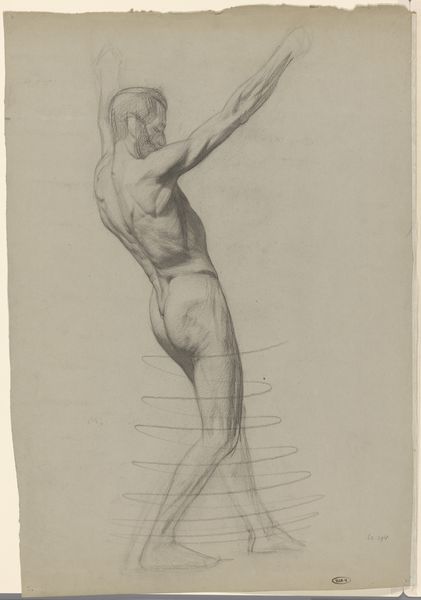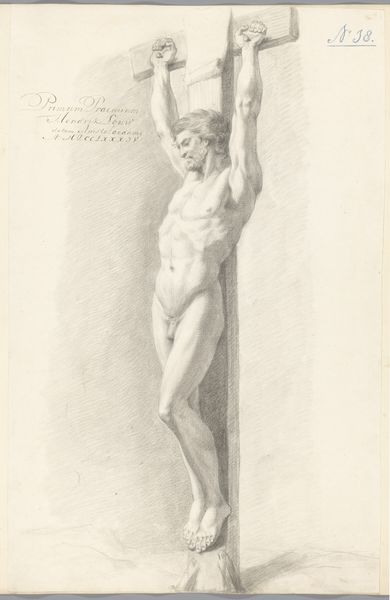
Gips van antiek beeld van staande naakt man, met opgeheven linkerarm Possibly 1827
0:00
0:00
johannestavenraat
Rijksmuseum
drawing, pencil
#
portrait
#
drawing
#
pencil sketch
#
classical-realism
#
figuration
#
pencil drawing
#
pencil
#
academic-art
#
nude
Dimensions: height 585 mm, width 348 mm
Copyright: Rijks Museum: Open Domain
Editor: This is a pencil drawing by Johannes Tavenraat, possibly from 1827. It’s titled "Plaster Cast of an Antique Statue of a Standing Nude Man, with Raised Left Arm.” The figure's pose feels... aspirational, reaching for something. How do you interpret this work? Curator: It's tempting to see this drawing simply as an academic exercise, a study of form. However, consider the cultural context. This was created during a time when the idealization of the male nude was deeply intertwined with notions of power, citizenship, and Western cultural superiority, so its artistic context and presentation needs unpacking. The figure is poised and almost seems to demand our attention in a colonial "Look at Me" kind of way, as an idealized masculine vision. How does that sit with you? Editor: That's… unsettling, framing it that way. I was focused on the classical form. I hadn’t considered the power dynamics inherent in its creation and presentation. Curator: Precisely! Academic art, particularly drawings of nude male figures, often served as tools to reinforce and perpetuate societal hierarchies. Think about who had access to education, who was being represented and who was doing the representing. What does this ideal omit? Whose bodies are absent here? Editor: I see what you mean. The very act of depicting and studying this form was likely a statement about what was valued. It wasn't just about art, it was a social and political declaration. Curator: Exactly. This "neutral" depiction naturalizes power. This is what these educational exercises could do. Recognizing these layers helps us understand how art participates in broader power structures. Editor: That’s a really different way of seeing it. I’ll definitely keep this in mind going forward. Curator: Excellent. Analyzing art is always more complex when situated in time, including our own.
Comments
No comments
Be the first to comment and join the conversation on the ultimate creative platform.
